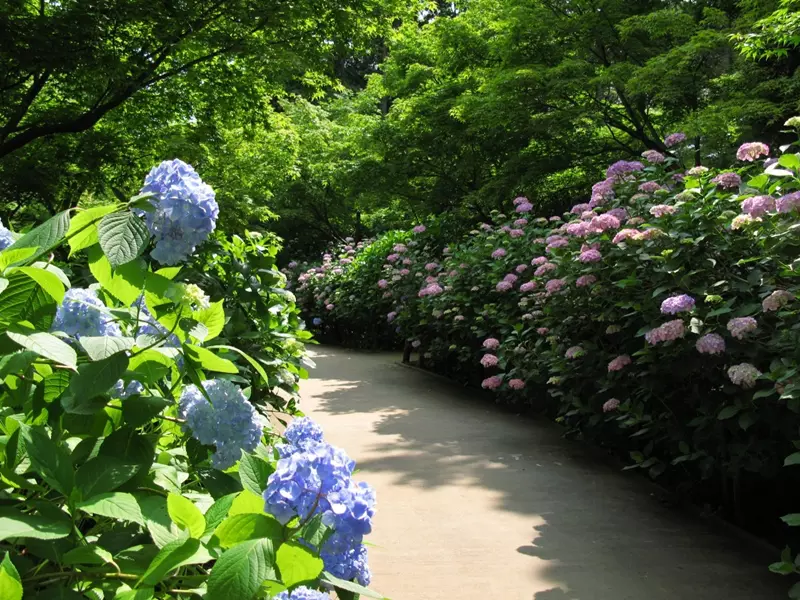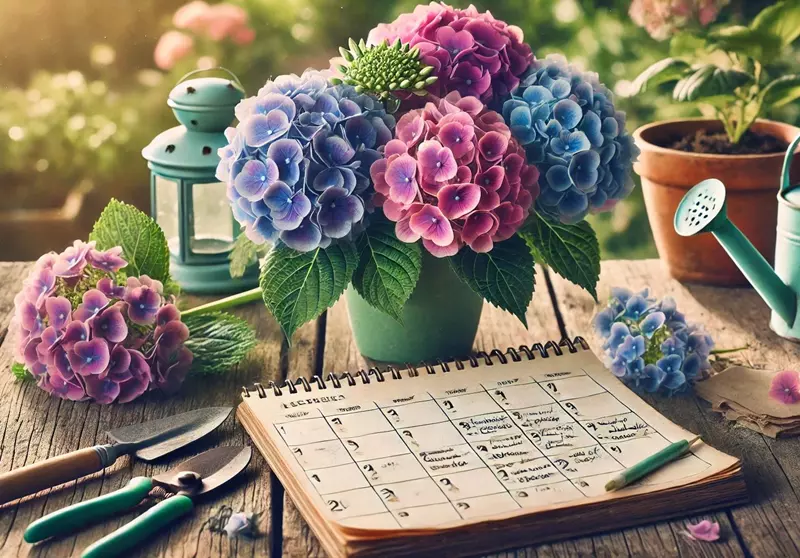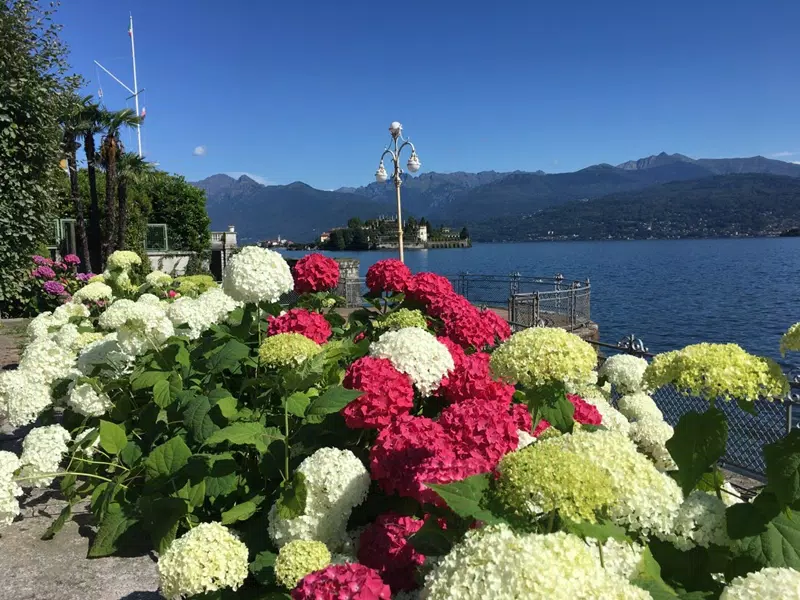Table of Contents
Choosing Suitable Hydrangea Varieties for Pots
Hydrangeas are renowned for their lush blooms and vibrant colours, making them a popular choice for gardeners. For those with limited space, such as balconies or small patios, growing hydrangeas in pots is an excellent solution. Selecting the appropriate hydrangea varieties is crucial to ensure healthy growth and abundant flowering in containers.
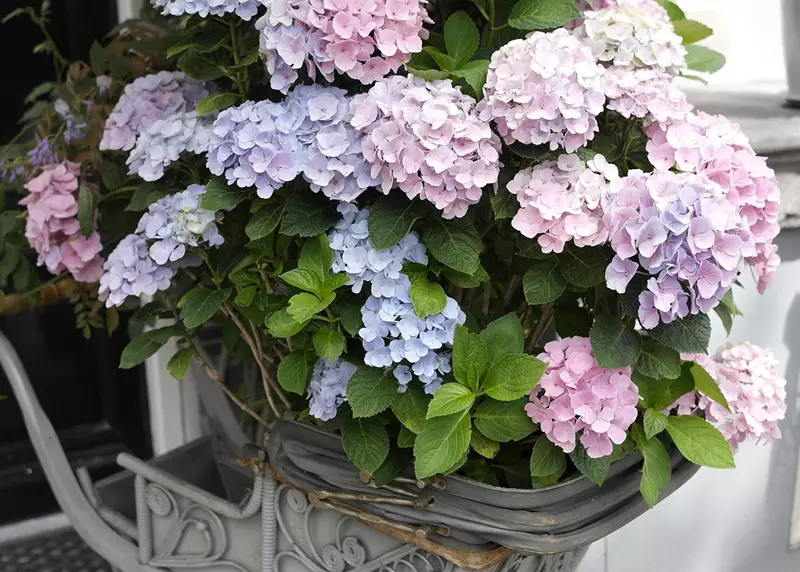 Hydrangea in pot - Source: pixabay.com; Author: Richgold / J.Rim Lee; License: Pixabay License
Hydrangea in pot - Source: pixabay.com; Author: Richgold / J.Rim Lee; License: Pixabay License
Understanding Hydrangea Varieties
Hydrangeas encompass a diverse range of species and cultivars, each with unique characteristics. When choosing varieties for pot cultivation, consider factors such as growth habit, size, and bloom type. Compact or dwarf varieties are particularly well-suited for containers due to their manageable size and adaptability.
Top Hydrangea Varieties for Pots
- Hydrangea macrophylla 'Little Spooky': A dwarf variety reaching up to 50cm in height, 'Little Spooky' produces dense, white flower heads and is ideal for small containers.
- Hydrangea paniculata 'Little Fraise': This compact shrub grows to around 70cm and features cone-shaped flowers that transition from white to pink as they mature.
- Hydrangea macrophylla 'Music Deep Purple Dance': Known for its velvety purple flowers in large clusters, this variety adds rich colour to pots and containers.
- Hydrangea macrophylla 'Runaway Bride': A versatile variety that can even be grown in hanging baskets, 'Runaway Bride' offers cascading white blooms throughout the season.
- Hydrangea paniculata 'Polestar': A dwarf variety with compact growth, ideal for pot cultivation.
Factors to Consider When Selecting Hydrangea Varieties for Pots
- Growth Habit: Opt for compact or dwarf varieties that naturally maintain a smaller size, ensuring they fit well within the confines of a pot.
- Bloom Time: Choose varieties with bloom times that align with your aesthetic preferences and maintenance capabilities.
- Sunlight Requirements: Ensure the selected variety's sunlight needs match the light conditions of your balcony or patio.
- Hardiness: Select varieties that can withstand the local climate, especially if pots are exposed to varying weather conditions.
Benefits of Growing Hydrangeas in Pots
- Mobility: Potted hydrangeas can be moved to optimise sunlight exposure and protect them from harsh weather.
- Soil Control: Growing in pots allows for precise control over soil type and pH, which can influence bloom colour in certain hydrangea species.
- Space Efficiency: Ideal for small gardens, balconies, or patios where ground planting is not feasible.
Selecting the right hydrangea variety is essential for successful pot cultivation. By choosing compact, adaptable varieties and considering factors such as growth habit and sunlight requirements, you can enjoy the beauty of hydrangeas even in limited spaces. With proper care and attention, potted hydrangeas can thrive and bring vibrant colour to your balcony or patio.
Selecting the Right Containers
Growing hydrangeas in pots is an excellent solution for gardeners with limited space or those looking to add versatility to their plant arrangements. Choosing the appropriate container is crucial to ensure the health and vitality of your hydrangeas. This guide delves into the key factors to consider when selecting containers for potted hydrangeas.
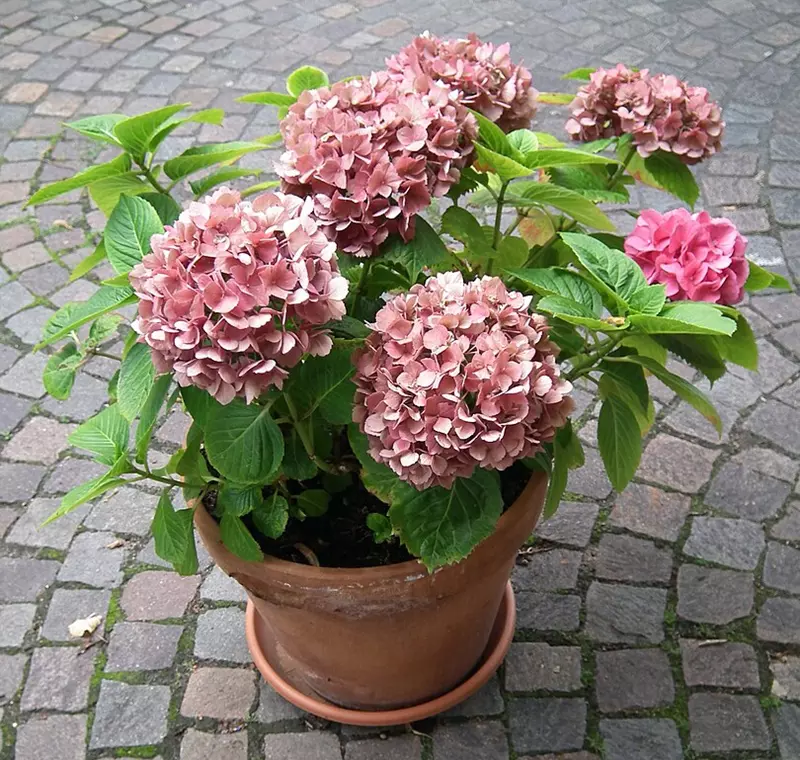 Hydrangea macrophylla in pot on the ground - By 4028mdk09 - Own work, CC BY-SA 3.0, Link
Hydrangea macrophylla in pot on the ground - By 4028mdk09 - Own work, CC BY-SA 3.0, Link
Size Matters
Hydrangeas have extensive root systems that require ample space to thrive. Selecting a pot that is too small can restrict root growth, leading to poor plant health. Consider the following when choosing the size:
- Depth and Width: Opt for containers that are at least 45-50 cm (18-20 inches) in both depth and diameter to accommodate the root system adequately.
- Growth Allowance: Choose a pot that allows for growth over time, reducing the need for frequent repotting.
Material Considerations
The material of the container affects moisture retention, weight, and insulation. Common options include:
- Terracotta: Porous and allows for air circulation but can dry out quickly and may crack in frost conditions.
- Plastic: Lightweight and retains moisture well; however, it may offer less insulation against temperature fluctuations.
- Wood: Provides good insulation and a natural aesthetic but requires treatment to prevent rot.
- Metal: Durable but can heat up quickly in the sun, potentially harming roots.
Choose a material that aligns with your climate conditions and aesthetic preferences.
Drainage is Key
Proper drainage is essential to prevent waterlogging, which can lead to root rot. Ensure your chosen container has:
- Drainage Holes: Multiple holes at the base to allow excess water to escape.
- Drainage Layer: Consider adding a layer of gravel or broken pottery at the bottom to enhance drainage.
Mobility and Placement
The ability to move your potted hydrangeas can be beneficial for optimizing sunlight exposure and protecting them from adverse weather. Consider the following:
- Weight: Lighter materials like plastic make it easier to relocate pots as needed.
- Wheeled Stands: Using pot trolleys or stands with casters can facilitate movement.
- Sun Exposure: Place pots in locations that receive morning sun and afternoon shade, as hydrangeas prefer partial shade.
Insulation and Protection
Potted plants are more susceptible to temperature fluctuations. To protect your hydrangeas:
- Insulating Materials: Wooden containers offer better insulation against temperature extremes.
- Winter Protection: In colder climates, consider wrapping pots with insulating materials or moving them to sheltered areas during winter.
Selecting the right container for your potted hydrangeas involves careful consideration of size, material, drainage, mobility, and insulation. By choosing appropriately, you can ensure your hydrangeas thrive and enhance your garden space with their beautiful blooms.
Planting Hydrangeas in Pots: A Step-by-Step Guide
Hydrangeas are celebrated for their lush blooms and adaptability, making them a favourite among gardeners. Growing hydrangeas in pots is a fantastic choice for those with limited space or who want to add a touch of elegance to patios and balconies. This guide provides step-by-step instructions for planting hydrangeas in containers to ensure their health and vibrancy.
Choosing the Right Hydrangea Variety
Not all hydrangeas are suitable for pots. Compact or dwarf varieties are ideal for container gardening because of their manageable size. Here are some excellent options:
- Hydrangea macrophylla 'Little Spooky': A dwarf variety with dense white flowers, perfect for small containers.
- Hydrangea paniculata 'Bobo': Known for its profuse white blooms, this variety stays compact and is well-suited for pots.
- Hydrangea serrata 'Bluebird': A lacecap hydrangea that thrives in containers with its delicate blue flowers.
Preparing the Pot and Soil
Proper preparation is essential for healthy hydrangeas. Follow these steps:
- Container Size: Use a pot that is at least 45-50 cm deep and wide to accommodate the hydrangea's roots.
- Drainage: Ensure the pot has drainage holes to prevent waterlogging. Adding a layer of gravel or broken pottery at the bottom can further aid drainage.
- Potting Mix: Use a high-quality ericaceous compost for acid-loving hydrangeas, which is particularly important for maintaining blue flower colour.
Steps for Planting Hydrangeas in Pots
- Prepare the Container: Place a layer of drainage material, such as gravel, at the bottom of the pot. Fill the container halfway with the prepared potting mix.
- Position the Hydrangea: Remove the hydrangea from its nursery pot and gently loosen the roots. Place it in the centre of the container, ensuring the top of the root ball sits slightly below the pot’s rim.
- Fill with Soil: Add potting mix around the root ball, firming it gently to remove air pockets. Leave some space at the top to allow for watering.
- Water Thoroughly: After planting, water the hydrangea deeply to settle the soil around the roots.
Initial Care After Planting
Proper care after planting sets the foundation for healthy growth:
- Watering: Keep the soil consistently moist but not waterlogged. Hydrangeas are thirsty plants and require regular watering, especially in hot weather.
- Placement: Place the pot in a location that receives morning sun and afternoon shade. Too much direct sunlight can scorch the leaves.
- Fertilising: Apply a balanced, slow-release fertiliser in spring to support growth and flowering.
Planting hydrangeas in pots is an excellent way to bring vibrant colour to small spaces. By selecting the right variety, preparing the container and soil properly, and following the recommended planting steps, you can create a thriving potted hydrangea that will be the pride of your garden or balcony. With regular care and attention, your hydrangeas will flourish and provide stunning blooms year after year.
Care Tips for Potted Hydrangeas
Potted hydrangeas bring vibrant colour and elegance to patios, balconies, and gardens. To ensure these plants thrive in containers, it's essential to provide proper care tailored to their specific needs. This guide offers detailed advice on maintaining healthy potted hydrangeas, covering aspects such as watering, fertilising, pruning, and overwintering.
Watering
Hydrangeas require consistent moisture, especially when grown in pots. However, overwatering can lead to root rot. Consider the following practices:
- Regular Monitoring: Check the soil moisture daily, particularly during hot weather. The top inch of soil should feel moist but not waterlogged.
- Deep Watering: Water thoroughly until excess drains from the bottom, ensuring the entire root ball is hydrated.
- Mulching: Apply a layer of organic mulch on the soil surface to retain moisture and regulate temperature.
Fertilising
Proper nutrition promotes healthy growth and abundant blooms. Follow these fertilising guidelines:
- Timing: Apply a balanced, slow-release fertiliser in early spring as new growth emerges. Avoid fertilising after mid-summer to prevent stimulating late growth susceptible to frost.
- Application: Follow the manufacturer's instructions for dosage. Over-fertilising can lead to excessive foliage at the expense of blooms.
- Soil pH Consideration: For blue-flowering varieties, use a fertiliser suitable for acid-loving plants to maintain the desired flower colour.
Pruning
Pruning potted hydrangeas helps maintain their shape and encourages flowering. The approach varies by species:
- Mophead and Lacecap Hydrangeas (Hydrangea macrophylla): These bloom on old wood. In early spring, remove dead flower heads, cutting back to the first pair of healthy buds. Avoid heavy pruning, as it can reduce flowering.
- Panicle Hydrangeas (Hydrangea paniculata) and Smooth Hydrangeas (Hydrangea arborescens): These bloom on new wood. Prune in late winter or early spring, cutting back stems to a healthy pair of buds to encourage vigorous growth and larger blooms.
Overwintering
Potted hydrangeas are more vulnerable to cold temperatures. To protect them during winter:
- Insulation: Wrap pots with insulating materials like burlap or bubble wrap to shield roots from freezing temperatures.
- Mulching: Apply a thick layer of mulch over the soil surface to provide additional root protection.
- Relocation: If possible, move pots to a sheltered location, such as an unheated garage or shed, during the coldest months.
Pest and Disease Management
Potted hydrangeas can be susceptible to pests and diseases. Implement the following practices:
- Regular Inspection: Check plants routinely for signs of pests like aphids or diseases such as powdery mildew.
- Good Air Circulation: Space pots adequately to promote airflow, reducing the risk of fungal infections.
- Appropriate Treatments: Use insecticidal soaps or fungicides as necessary, following the manufacturer's guidelines.
Caring for potted hydrangeas involves attentive watering, appropriate fertilising, timely pruning, and adequate winter protection. By adhering to these guidelines, your potted hydrangeas will flourish, providing stunning blooms and enhancing your outdoor space.
Seasonal Care and Maintenance
Potted hydrangeas are a delightful addition to any garden or patio, offering vibrant blooms throughout the growing season. To ensure they thrive year-round, it's essential to provide tailored care during each season. This guide outlines the necessary steps to maintain the health and beauty of your potted hydrangeas from spring through winter.
Spring Care
Spring is a critical period for hydrangeas as they emerge from dormancy. Key tasks include:
- Pruning: For Hydrangea macrophylla (mophead and lacecap varieties), remove dead flower heads by cutting back to the first pair of healthy buds. Avoid heavy pruning, as these types bloom on old wood. For Hydrangea paniculata and Hydrangea arborescens, which bloom on new wood, prune back stems to a healthy pair of buds to encourage vigorous growth.
- Fertilising: Apply a balanced, slow-release fertiliser to support new growth. Ensure the fertiliser is appropriate for the specific hydrangea variety.
- Watering: Begin regular watering as temperatures rise, keeping the soil consistently moist but not waterlogged.
Summer Care
During the summer, hydrangeas are in full bloom and require diligent care:
- Watering: Hydrangeas thrive in moist soil and can wilt in hot weather, so be ready to give extra water during hot spells, especially if they are in full sun.
- Mulching: Apply a layer of organic mulch to retain soil moisture and regulate temperature.
- Deadheading: Remove spent blooms to encourage continuous flowering and maintain plant appearance.
- Shade Protection: If possible, position potted hydrangeas to receive morning sun and afternoon shade to prevent leaf scorch.
Autumn Care
As temperatures cool, prepare your hydrangeas for the dormant season:
- Watering: Continue to water regularly, as hydrangeas need moist soil. Be ready to give extra water during hot spells in summer, especially if they are in full sun.
- Fertilising: Avoid fertilising after mid-summer to prevent stimulating late growth susceptible to frost.
- Pruning: Refrain from major pruning in autumn, as it can remove buds set for next year's blooms. Instead, focus on removing dead or diseased wood.
- Mulching: Add a layer of mulch to insulate roots against impending cold temperatures.
Winter Care
Protecting potted hydrangeas during winter is crucial, especially in colder climates:
- Insulation: Wrap pots with insulating materials like burlap or bubble wrap to shield roots from freezing temperatures.
- Relocation: Move pots to a sheltered spot in your garden and raise them off the ground using pot feet or bricks to prevent waterlogging and frost damage.
- Minimal Watering: Water sparingly during winter dormancy, just enough to keep the soil from completely drying out.
By adhering to these seasonal care guidelines, your potted hydrangeas will remain healthy and vibrant throughout the year. Attentive maintenance during each season ensures robust growth and abundant blooms, allowing these beautiful plants to enhance your outdoor space continually.
About the Author

Richard Seres-Nagy is a passionate gardener with over 20 years of experience in hydrangea care. He founded Hydrangea Library to share expert advice, step-by-step guides, and practical tips for fellow gardening enthusiasts.
Read More
